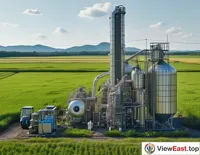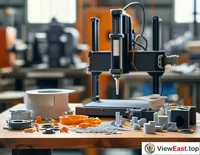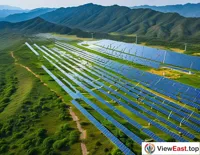







In the wake of China's economic boom, circular economy has emerged as a refreshing breeze, ushering in a new chapter in waste utilization. This is not just an environmental revolution but a profound transformation of economic development models. From cities to villages, from factories to households, China is converting waste into resources at an unprecedented speed and scale, writing a new chapter in green development.
1. The Wheels of History: The Sprouting of Circular Economy
Towards the end of the 20th century, as China's economy rapidly developed, issues of resource consumption and environmental pollution became increasingly prominent. People began to realize that the traditional linear economy model—"take, make, dispose"—no longer fit the needs of sustainable development. Against this backdrop, the concept of circular economy was born, advocating the principles of "reduce, reuse, recycle," aiming to build a closed-loop economic system.
2. Policy Leadership: Advancing Circular Economy
Entering the 21st century, the Chinese government began to vigorously promote circular economy. From the "11th Five-Year Plan" to the "14th Five-Year Plan," circular economy has always been a key term in policy documents. The government has introduced a series of policies, including tax incentives, financial subsidies, and green credit, to encourage enterprises and the public to participate in circular economy practices.
3. Technological Innovation: Implementing Circular Economy
Technological innovation is a crucial force driving the development of circular economy. China has made significant progress in waste treatment and resource recovery technologies. For example, agricultural waste is transformed into biofuels through biotechnology, advanced sorting technologies improve urban waste recycling rates, and 3D printing technology reduces material waste in industrial production.
4. Social Participation: Popularizing Circular Economy
With the rise of environmental awareness, more and more Chinese enterprises and the public are getting involved in circular economy. Enterprises reduce waste generation by improving production processes; consumers extend the life of products through second-hand transactions and item sharing. This bottom-up force injects new vitality into the development of circular economy.
5. Achievements on Display: The Fruits of Circular Economy
China has achieved a series of remarkable accomplishments in the field of circular economy. Urban waste recycling rates have significantly increased, the comprehensive utilization rate of industrial solid waste has steadily grown, and the resource utilization of agricultural waste has also made breakthroughs. These achievements not only reduce environmental pollution but also promote the green transformation of the economy.
6. Future Outlook: The Continuous Development of Circular Economy
Looking ahead, China will continue to deepen the practice of circular economy. Through technological innovation, policy guidance, and social participation, China is expected to play a greater leading role in the global circular economy, contributing Chinese wisdom and solutions to global sustainable development.
To help readers understand the core content of circular economy, we can use a vivid metaphor. Imagine if we compare China's economy to a huge machine, then circular economy is the lubricant for this machine. It not only reduces friction and wear during machine operation but also improves the machine's efficiency and lifespan. By recycling waste, we protect the environment and inject new momentum into economic development.